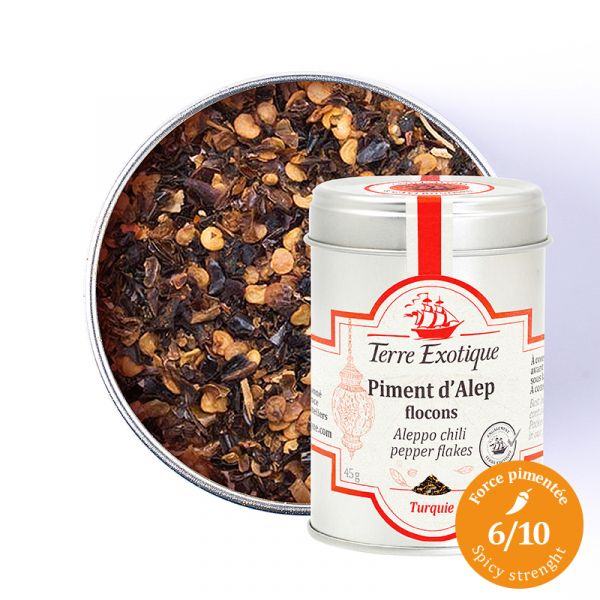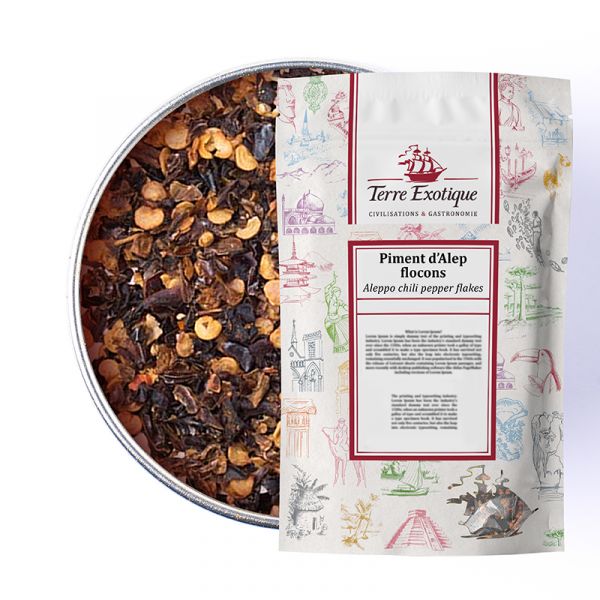





What dishes to use Aleppo pepper flakes in?
How to use Aleppo pepper flakes?
Here are some recipe ideas for using Aleppo pepper flakes in your cooking:
· Syrian Muhammara: after blending your peppers, add 1 tablespoon of Aleppo pepper;
· Lebanese Ojji (omelette): add ½ teaspoon of Aleppo pepper to your beaten eggs;
· Chicken kefta with pepper: sprinkle 1 teaspoon of Aleppo pepper on your kefta skewers;
· Lebanese sautéed potatoes: cook 1 teaspoon of Aleppo pepper with a bunch of chopped cilantro, the juice of half a lemon and a pinch of salt over high heat for 1-2 minutes, until the cilantro falls, then pour this sauce over your pre-roasted potatoes;
· Hummus: add 1 teaspoon of Aleppo pepper to your hummus, then mix well before serving chilled.
The fruity pepper
Its sweet tomato flavors release soft and fruity notes of cumin, very aromatic. Aleppo pepper is a moderate and subtle pepper whose spiciness is 6/10 on the Scoville scale.
Aleppo pepper, what is it?
Peppers come from the Solanaceae family, whose botanical name is Capsicum annum, just like tomatoes and peppers. They are peppers that grow on robust plants that, however, are similar to the pepper plants we know.
Aleppo pepper originally developed in Aleppo, Syria, but is now grown in Turkey for geopolitical reasons.
These peppers grow in hot regions because they need a temperature between 25 and 30°C to develop.
The history of Aleppo pepper
As part of the Capsicum annum species, pepper was imported to Spain by Christopher Columbus at the end of the 15th century. It quickly developed in North Africa and the Ottoman Empire.
Today renowned around the world, from Europe to North America, pepper is consumed in all cuisines.
Aleppo pepper is a symbol of oriental cuisine
Due to the unstable situation in the Aleppo region, this species is now grown in Turkey where the climate is similar.
| Allergen | Absence |
|---|---|
| Native country | Turquie |
| Genus and botanical species | Capsicum annuum |
| Ingredients | chili pepper (>87%), salt (<7%), vegetal oil (<6%). |
| TRACES EVENTUELLES D'ALLERGÈNES | céleri, sésame, moutarde, fruits à coques. |
 Français
Français 